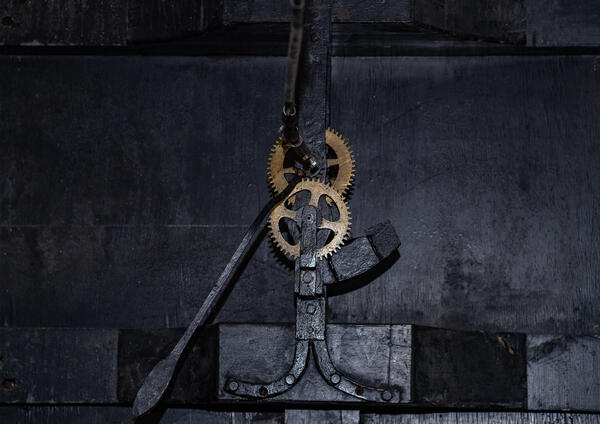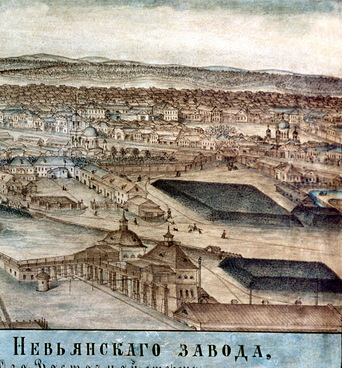On the first octagonal tier of the Nevyansk Tower there is a four-dial clock. The English chimes are a historical relic of the Urals, Russia, visual evidence of the interconnection between the two cultures, and one of the great mysteries of the Nevyansk Tower. It is not known exactly how they were acquired, as well as when and how they were delivered to the Nevyansk plant.
Apparently, the tower clock was installed in the 1730s. It consists of a mechanical part, a musical shaft, and some bells. The quarter shaft of the mechanical part works every quarter of an hour, but the number of the bell strikes is different: 6 strikes indicate 15 minutes, 12 strikes and the half-hour bell ringing mark half an hour, 18 strikes indicate 45 minutes, and 24 strikes plus the bell ringing mean one hour.
The musical shaft works every three hours — at three, six, nine and twelve o’clock. Initially, it had 18 English melodies encoded: folk songs, minuets, and marches of the late 17th — early 18th centuries. The chimes played those melodies until 1913. At the beginning of the 20th century, the melody “God Save the Tsar” was encoded. In the 1940s, Nevyansk masters M.T. Kozlov, K.F. Ruchiev and V.G. Oborin recorded the melody “Song of the Motherland”, and it was played until the early 1970s.
Over the course of three centuries, the chimes were repaired several times. In 1829, the clock was repaired by master F. Lemke from Danzig. In 1872, the clock was repaired by master I. Kogan from Mogilev. In the 1930s, V.G. Kozhin repaired the clock and then supervised its work. In the 1950s, the chimes were repaired, the premises were restored, the missing bells were cast, and the clock strike was restored.
In 1974, the restoration of the clock was entrusted to the welding equipment adjuster Alexander Ivanovich Sakantsev, after which the clock mechanism was started on February 27, 1975 at 14:00. In December 1976, Sakantsev installed three square wooden dials. They were made of waterproof plywood and coated with a special black varnish; the numbers and hands were made of brass. Alexander Sakantsev discovered genuine brass hands and the hand gear train of the dial in a clock shaft; they are now on display in the museum.
In 1985, the melodies “Mendelssohn’s March” and “Hail, My Rus'” — a fragment from Mikhail Glinka’s opera “A Life for the Tsar” (“Ivan Susanin”) were encoded. The chimes currently play this melody. In 2001, for the 300th anniversary of Nevyansk, Alexander Sakantsev carried out routine repair works and installed the fourth dial.



